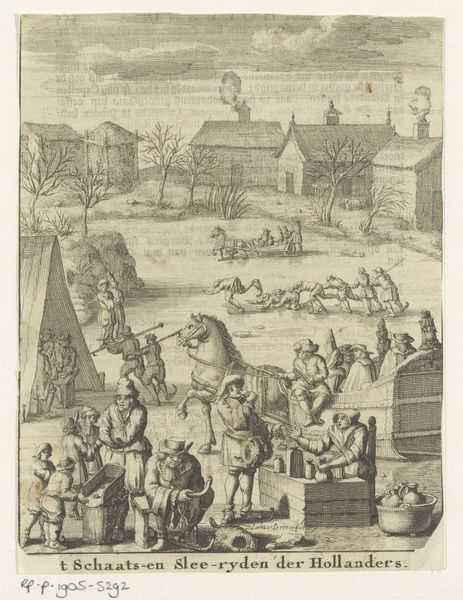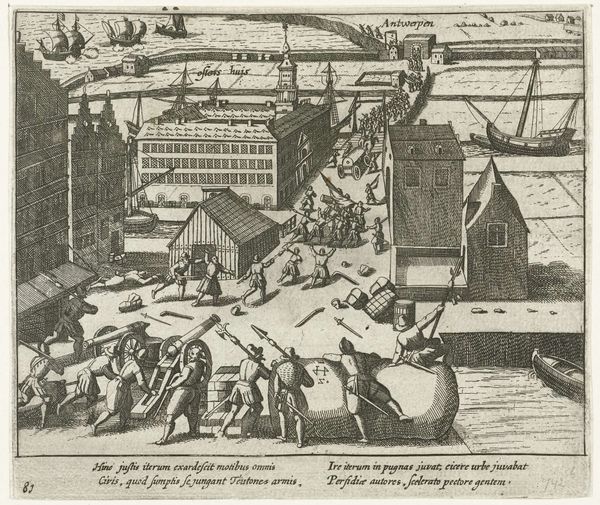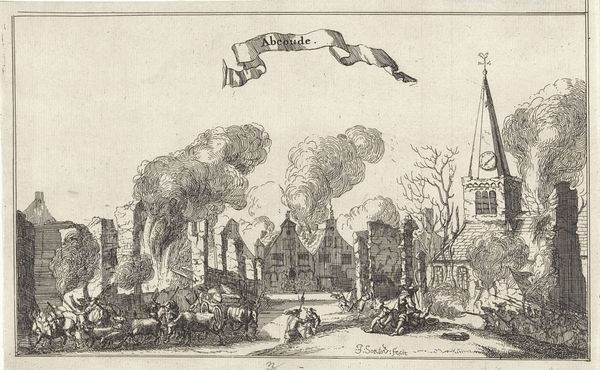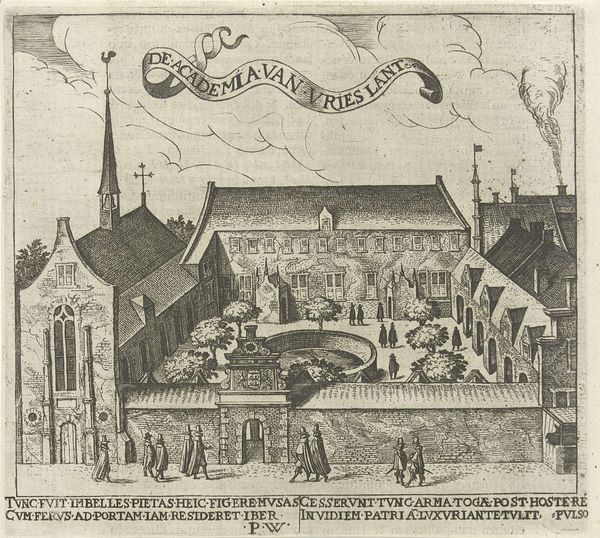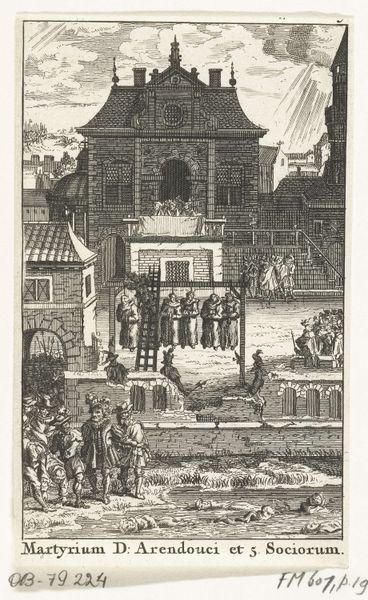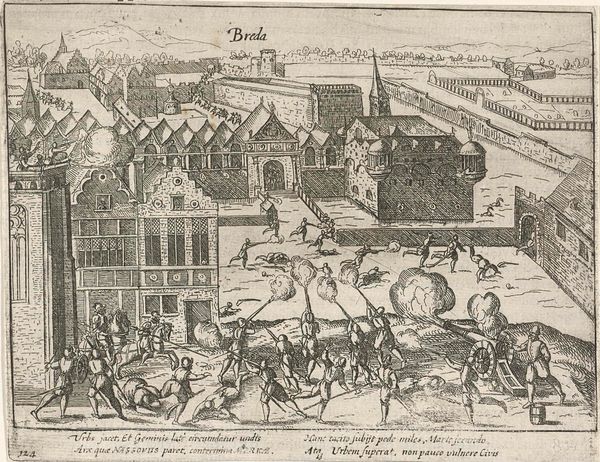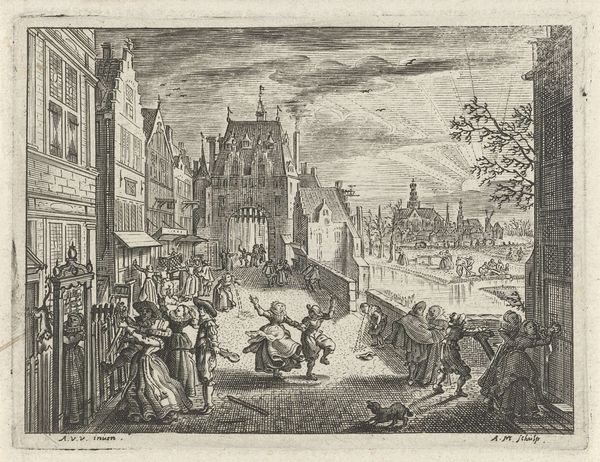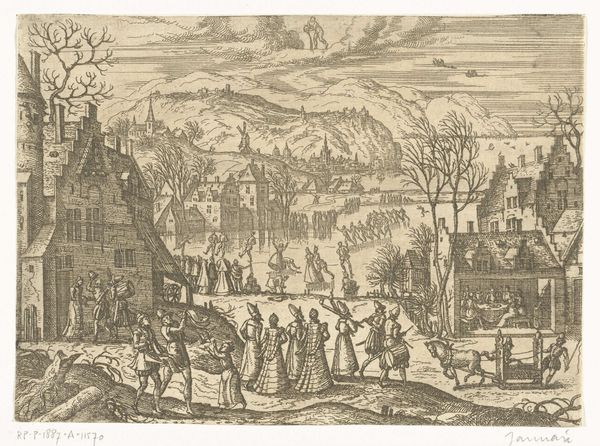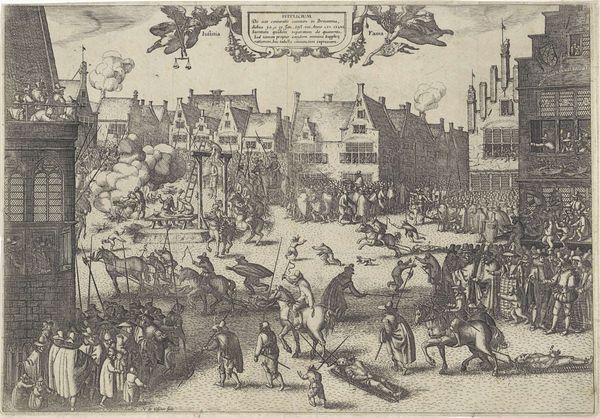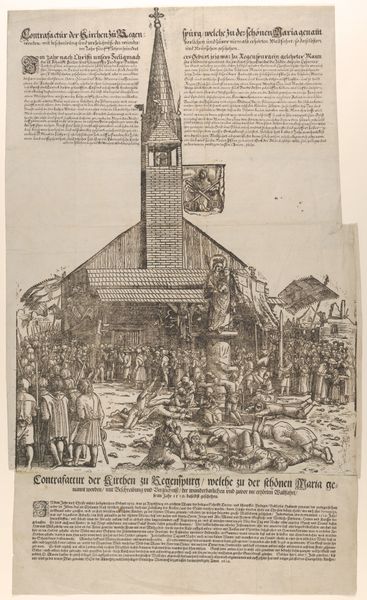
print, engraving
#
baroque
#
dutch-golden-age
# print
#
landscape
#
cityscape
#
history-painting
#
engraving
Dimensions: height 162 mm, width 180 mm
Copyright: Rijks Museum: Open Domain
Curator: What a stark and compelling image. We're looking at an engraving entitled "The Siege of Oldeklooster, 1535," created between 1620 and 1622 by Pieter Feddes van Harlingen. It's currently housed at the Rijksmuseum. Editor: The first thing that strikes me is the density of the scene. There's a real sense of claustrophobia, almost overwhelmed by detail, with figures meticulously rendered. It really emphasizes the brutality of conflict. Curator: Indeed. This piece captures a pivotal moment during the Frisian rebellion. It illustrates the siege of the Oldeklooster monastery, a significant historical event within the larger context of the Dutch Revolt. The image functions almost like a news report of its time, conveying a potent socio-political message. Editor: I'm drawn to the banner billowing above the church. Its swirling forms feel almost serpentine, like a visual representation of chaos unfurling, a sense of disruption invading the sacred space beneath. Even the architectural lines of the church and buildings contribute; see how the linear shapes are sharp and constricting. Curator: And notice how the artist strategically uses light and shadow. The stark contrasts create a sense of drama, highlighting the violence and the struggle for power. The scene presented is rich with carefully arranged architectural details along with depictions of figures locked in conflict; there is also attention paid to the consequences of this conflict, evident through what appears to be executions in the background. Editor: It also highlights the contrast between the solid permanence of the monastery versus the ephemeral, chaotic nature of war and specifically that depiction of brutality and hanging bodies serves as stark symbols of temporal authority, a grim reminder of what is at stake, underscoring the high stakes, the real cost, of the siege. Curator: Precisely. Feddes van Harlingen isn't merely depicting an event, he is commenting on the power structures and human cost of the conflict itself. It offers us valuable insight into the political climate and collective trauma of that era in the Dutch Republic. Editor: This really demonstrates how even what looks like a straightforward depiction of an historical event can hold complex layers of symbolic meaning when you begin to look beneath the surface, doesn't it? Curator: Absolutely, studying this engraving has allowed me to more carefully appreciate its potency within the wider sweep of historical representation.
Comments
No comments
Be the first to comment and join the conversation on the ultimate creative platform.
